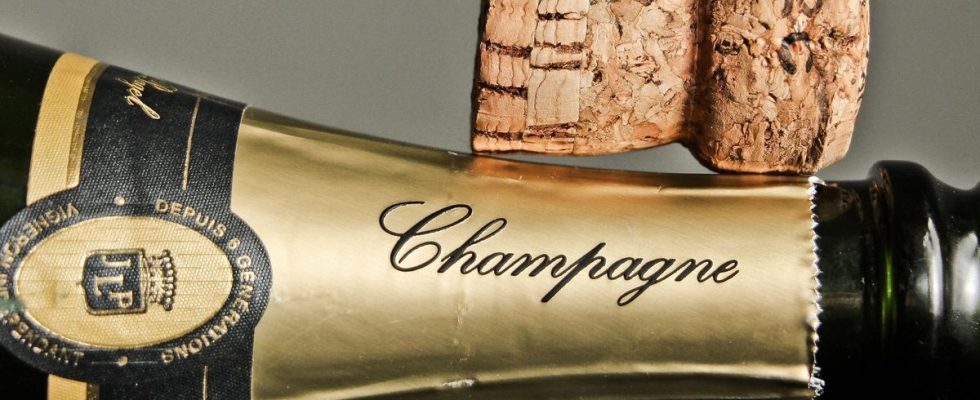This is the first thing to do before popping a good bottle of champagne. Tear off the little shiny paper that covers the cork and the muselet, this twisted wire. To continue with the jargon, know that this first layer is called a cap, and its future is at the heart of heated debates lately. For several months in fact, “producers of sparkling wines (…) can decide not to wear the attachment of a leaf”, stipulates a new European regulation.
In other words, sparkling wines, including champagne, can now do without a cap, originally invented to conceal possible deposits or differences in levels visible through the neck. And this “for operational reasons, such as cost reduction, waste prevention or improved marketing”, indicates the regulatory text.
The Champagne committee decides to keep it
However, it is not tomorrow the day before that your New Year’s Eve will take place in the company of partly exposed bottles. Because after several weeks of reflection, the interprofessional Champagne wine committee announced a few days ago that this overcorking would remain obligatory for any bottle that wanted to be called that.
“The headdress contributes to the prestige and value of Champagne,” indicates general director Charles Goemaere, who has no shortage of arguments to plead for its maintenance. “Visual identity code inseparable from Champagne wines”, the cap would guarantee “to the consumer the authenticity” of the product, further details Charles Goemaere. Studies have in fact shown that by sealing the bottle, it “reassures him about the origin of the wine as well as hygiene and safety”.
Paper versus aluminum
Mainly commercial considerations which clash with current environmental requirements. Because although it seems insignificant, this small packaging, most often made of aluminum and plastic, represents a significant source of non-recyclable waste when we know that more than 325 million bottles were shipped last year. Near Reims, this is why we have wanted for two years to replace this alloy with paperfirst on a special vintage.
“We had to wipe the plaster at the start, with the cost of the cap being too high and the paper a little too thick for the machines,” reports Emeline Cordy, marketing manager at Pierre Trichet. But it does the trick, with a rather pretty and harmonious result and excellent feedback from customers. We would also like to extend it to other parts of the range for 2024.” Initiatives which are not isolated, even if the cap would weigh “only 0.6% of the total greenhouse gas emissions of the sector”, attempts to reassure the interprofessional committee.
Crémant hesitates, cider emancipates itself
In aluminum or paper, we are not yet ready to free ourselves from the cap, which “finishes the bottle”. This is also what we feel on the side of the National Federation of Crémant Producers and Elaborators. “Unlike champagne, we have not yet made a decision about the regulations, but we feel that there is a real attachment to the traditional and aesthetic side,” observes Edouard Cassanet, host. And then, it won’t be so easy to say “I’m taking it off” from one day to the next. There is also the industrial aspect, with easy and well-established installation, which should be completely revised. »
Although it is not at all concerned by the new regulations, the heavyweight of ciders Kerisac has decided to to do without it. “The aluminum cap, a distinctive sign which allowed consumers to identify bottles of Kerisac cider among the others, is no longer,” the company announced in a press release. This removal is part of a desire to reduce the environmental impact of the cider mill.” With two million fewer caps, the company hopes to save 2.8 tonnes of aluminum per year.

